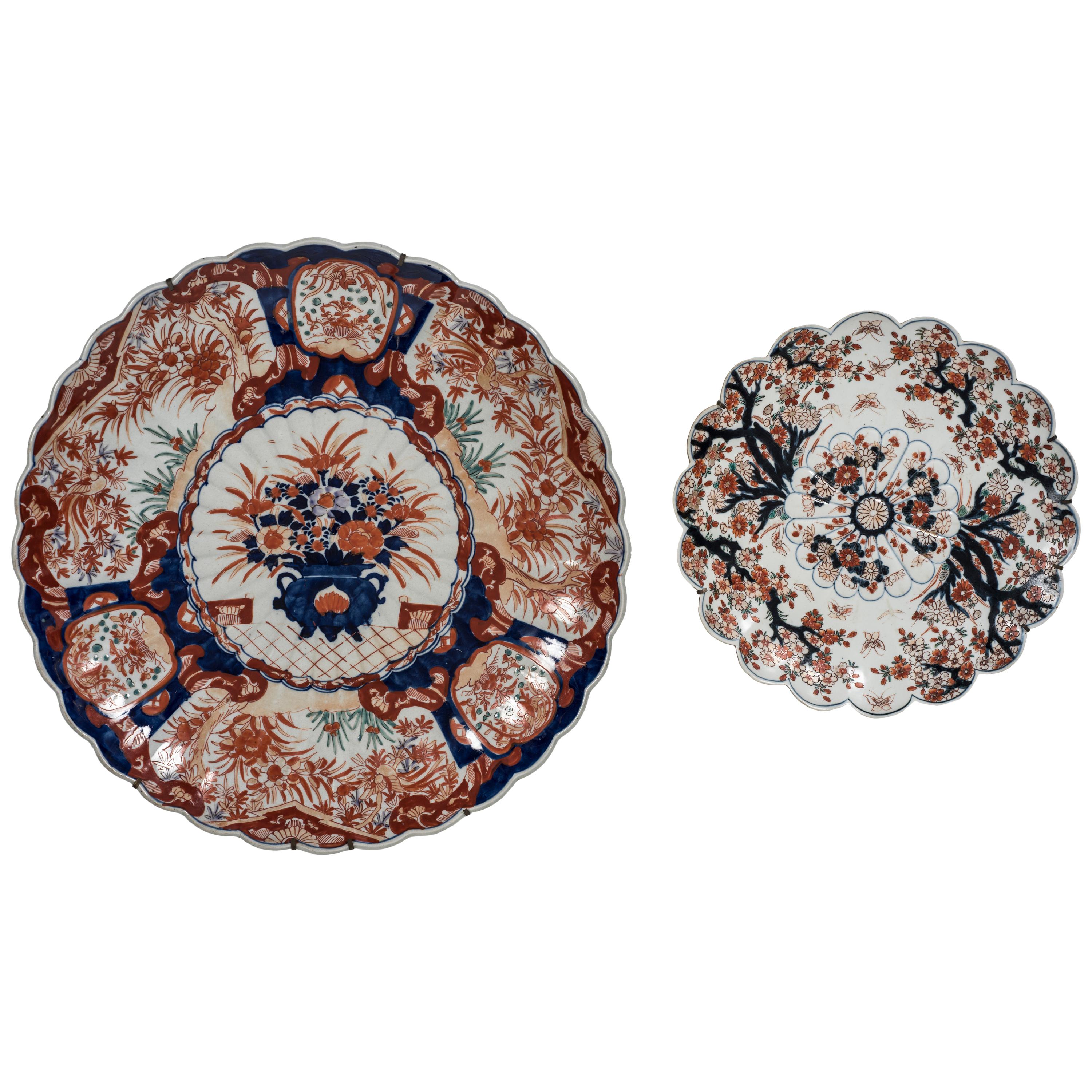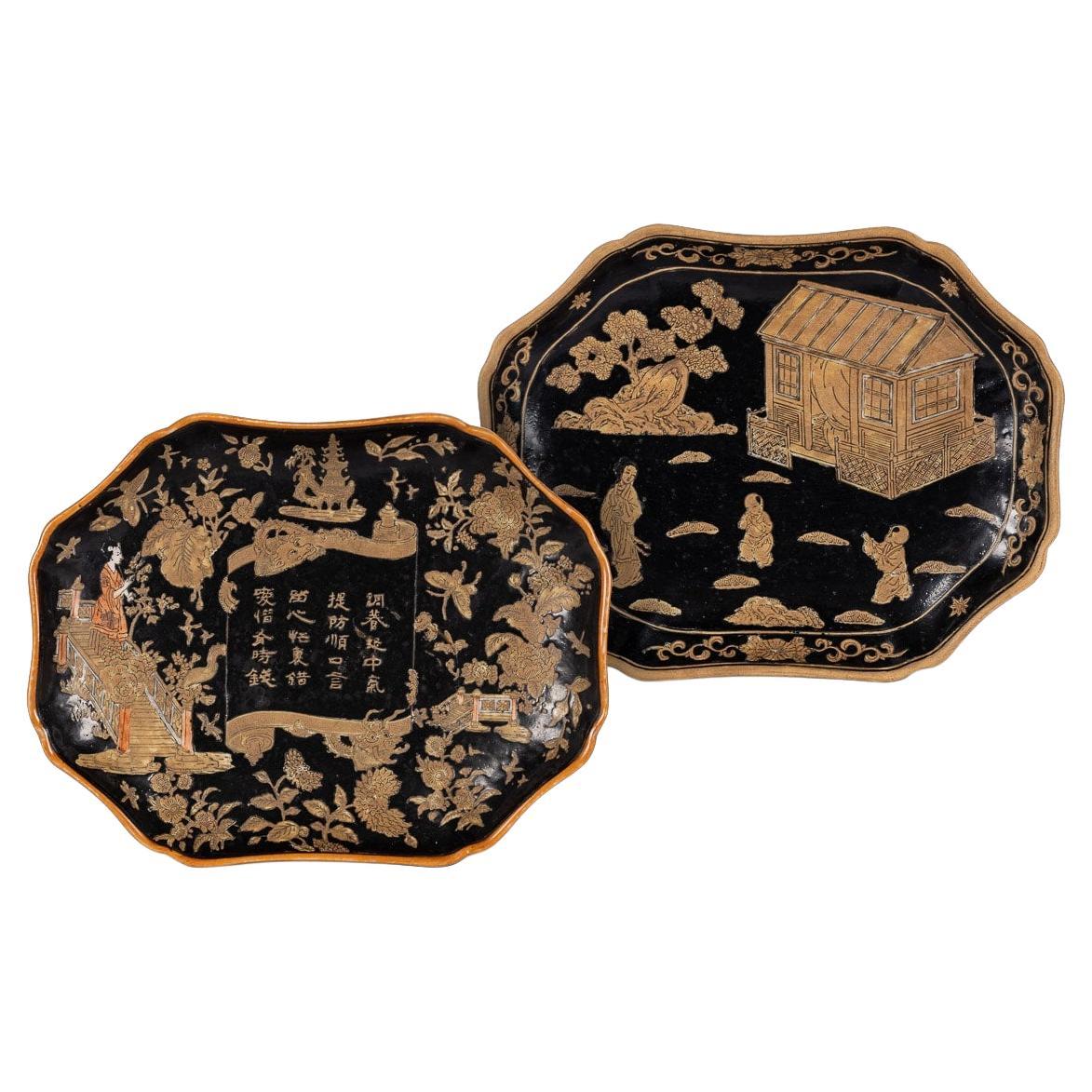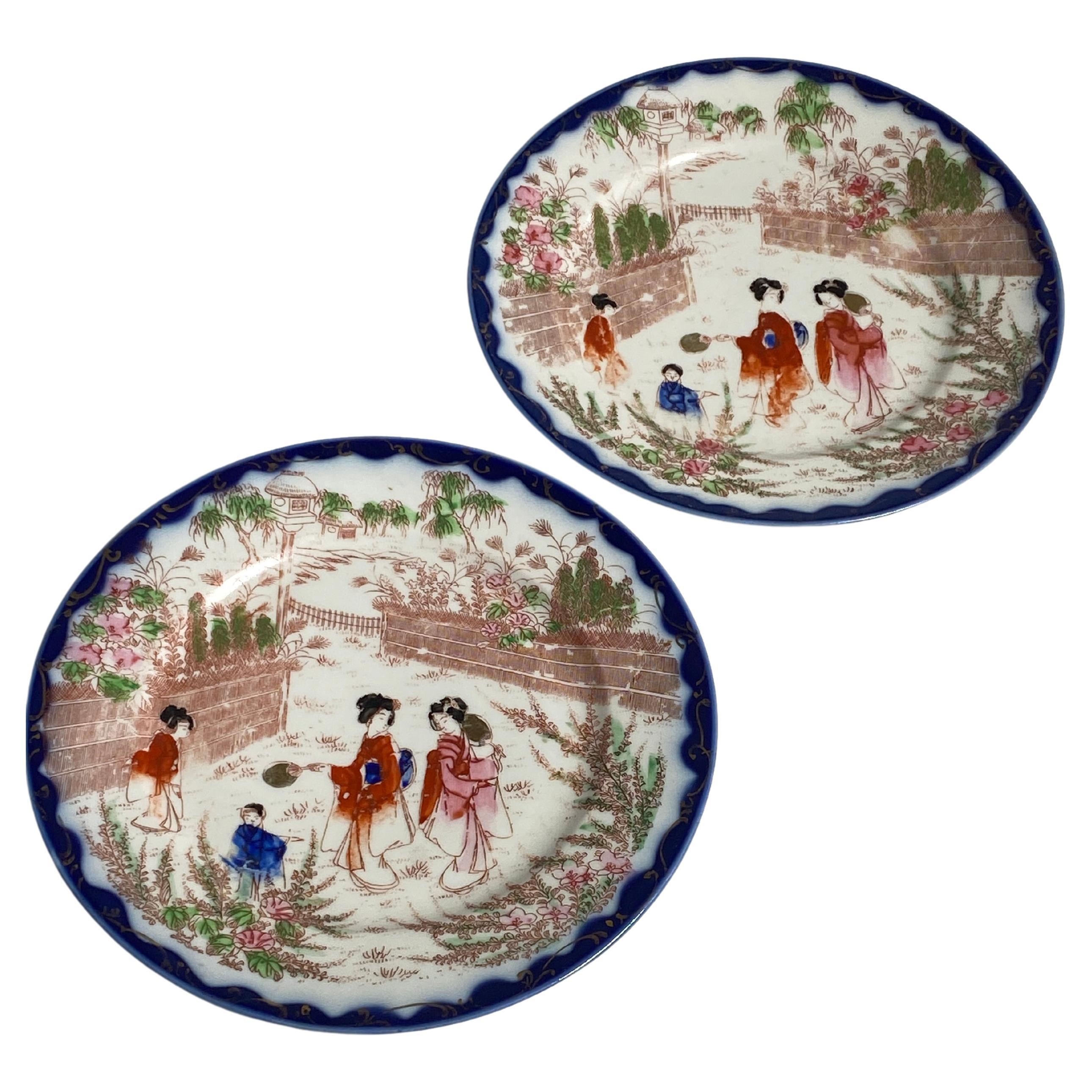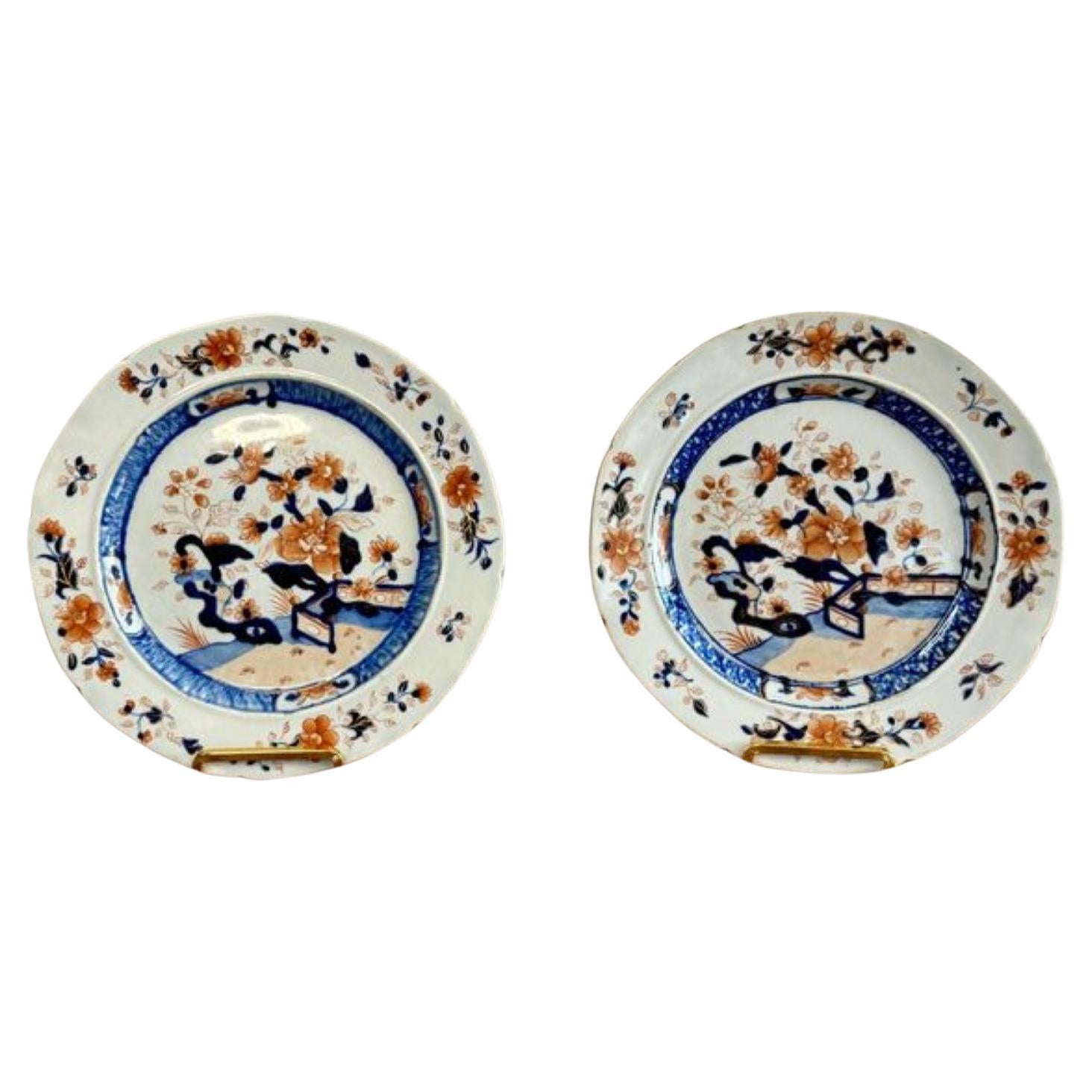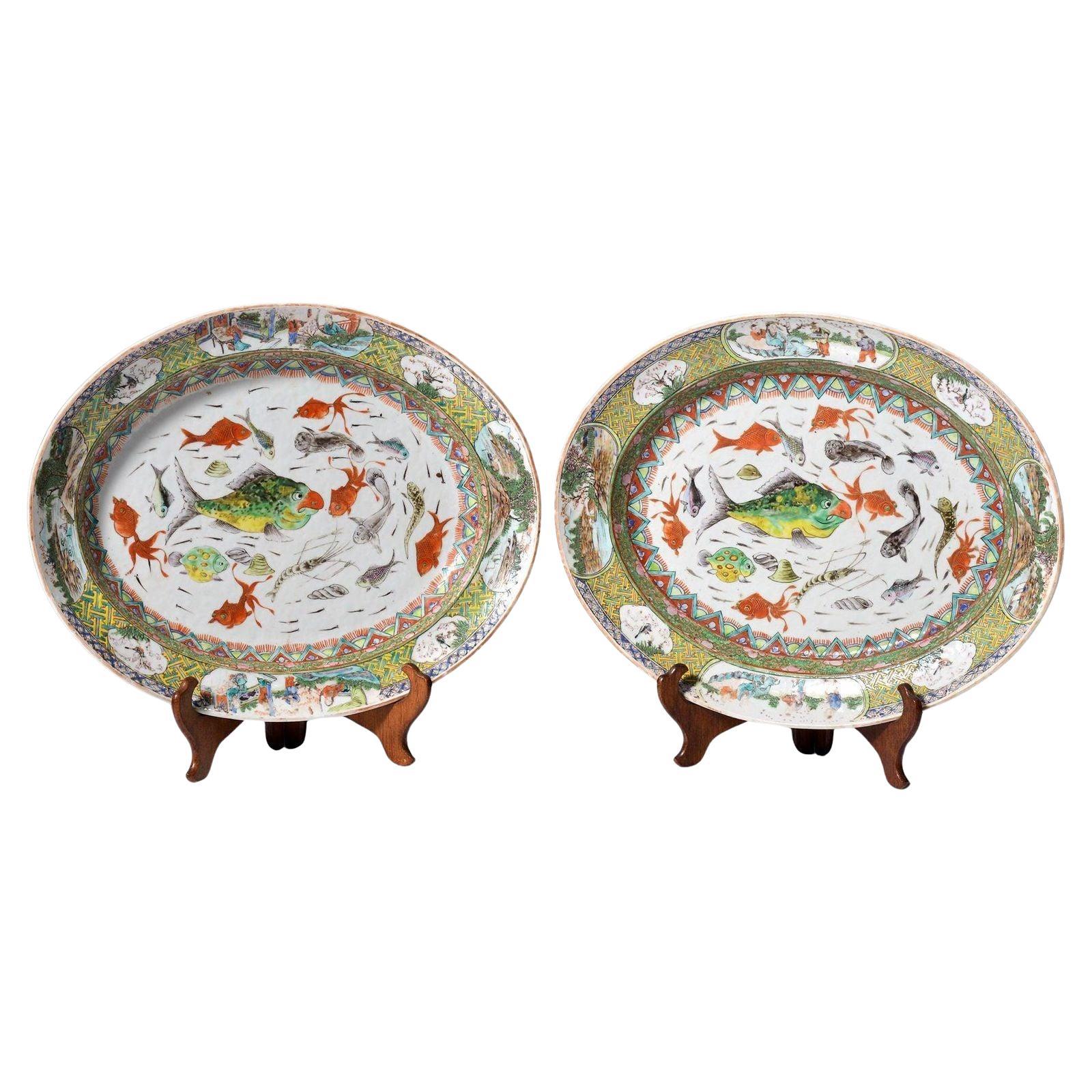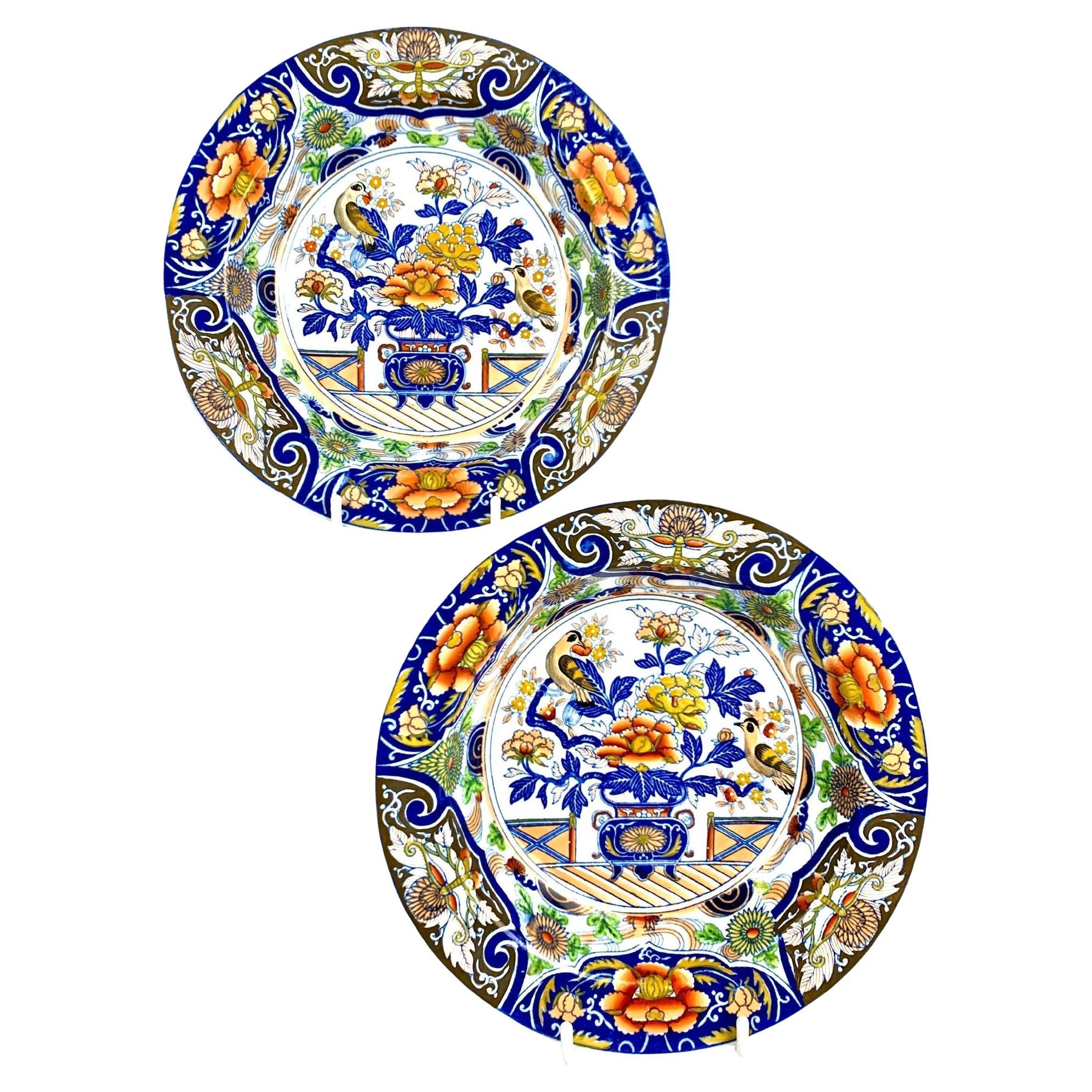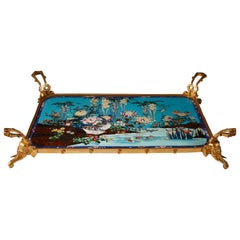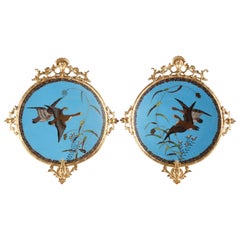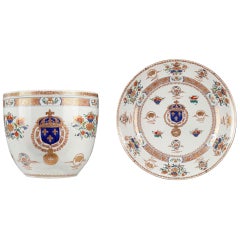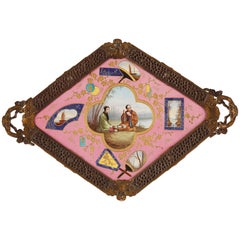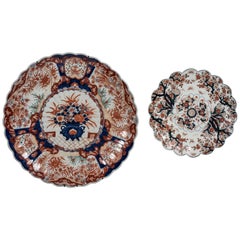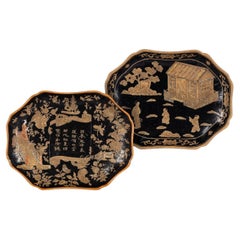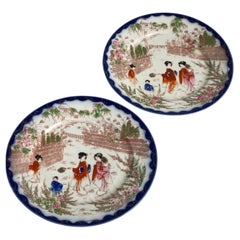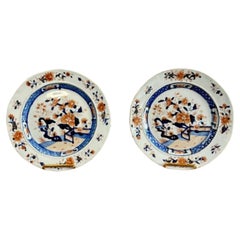Items Similar to Elegant Pair of Japanese Style Dishes, France, Circa 1875
Want more images or videos?
Request additional images or videos from the seller
1 of 10
Elegant Pair of Japanese Style Dishes, France, Circa 1875
$5,260.71per set
$14,347.39per set63% Off
£3,894.51per set
£10,621.40per set63% Off
€4,400per set
€12,000per set63% Off
CA$7,279.51per set
CA$19,853.20per set63% Off
A$8,025.49per set
A$21,887.70per set63% Off
CHF 4,198.68per set
CHF 11,450.94per set63% Off
MX$98,457.85per set
MX$268,521.40per set63% Off
NOK 52,853.02per set
NOK 144,144.61per set63% Off
SEK 49,425.94per set
SEK 134,798.01per set63% Off
DKK 33,516.50per set
DKK 91,408.64per set63% Off
About the Item
Pair of 18th century soft-paste porcelain dishes finely decorated in the 19th century with medallions representing Japanese theatre characters dressed in traditional costumes, beautiful gold-embossed ornament on a polychrome background.
These dishes are to be linked with the production of the Sèvres Manufacture.
The Manufacture de Sèvres, factory of soft-paste porcelain, was founded in 1738 at Vincennes by bankers and financiers hoping to discover the secret of making hard-paste porcelain, used in Meissen at the time. In 1753, King of France Louis XV became the main shareholder of the factory, transferring it to Sèvres, closer to Versailles and the castle of Bellevue, owned by la Marquise de Pompadour, very interested by Sèvres’ research and supportive of the works. In 1759, the King became the sole shareholder of the Manufacture, making it the property of the French Crown. From this day on, the Sèvres artworks were marked with the royal seal, two intertwined “L’s”, as well as a letter indicating the year of creation. The period between 1756 and 1779 represents the most prosperous years for the factory. To support Sèvres, Louis XV made sumptuous orders offered as diplomatic presents. The main artists at the time, such as painters Boucher and Bachelier or sculptors Falconet and Boizot, worked for the factory. Research on the making of hard-paste porcelain kept going and succeeded after 1769. From this year, Sèvres successfully produced both soft-paste and hard-paste porcelain. It is also during this period that the most beautiful and singular colors were invented: bleu lapis in 1752, bleu celeste in 1753, green in 1756, famous pink in 1757 and royal blue in 1763. The most significant pieces are ornamented with scenes inspired by engravings from famous painters (Boucher) and ornamentalists. They are also decorated with garlands, bunches of flowers, trophies, gildings… The fine quality of Sèvres’ production covers a large range of statuettes (Falconet’s threatening Love), full services (Rambouillet’s service is presented to Marie-Antoinette in 1788), as well as utilitarian or ornamental items. The role played by haberdashers in the production’s development is essential. They originated trends around Sèvres-designed products, such as Daguerre who decorated his most precious furniture with porcelain plates.
- Dimensions:Height: 1.58 in (4 cm)Width: 5.91 in (15 cm)Depth: 5.91 in (15 cm)
- Sold As:Set of 2
- Materials and Techniques:Porcelain,Polychromed
- Place of Origin:
- Period:
- Date of Manufacture:Circa 1875
- Condition:
- Seller Location:PARIS, FR
- Reference Number:Seller: 15141stDibs: LU3860311699081
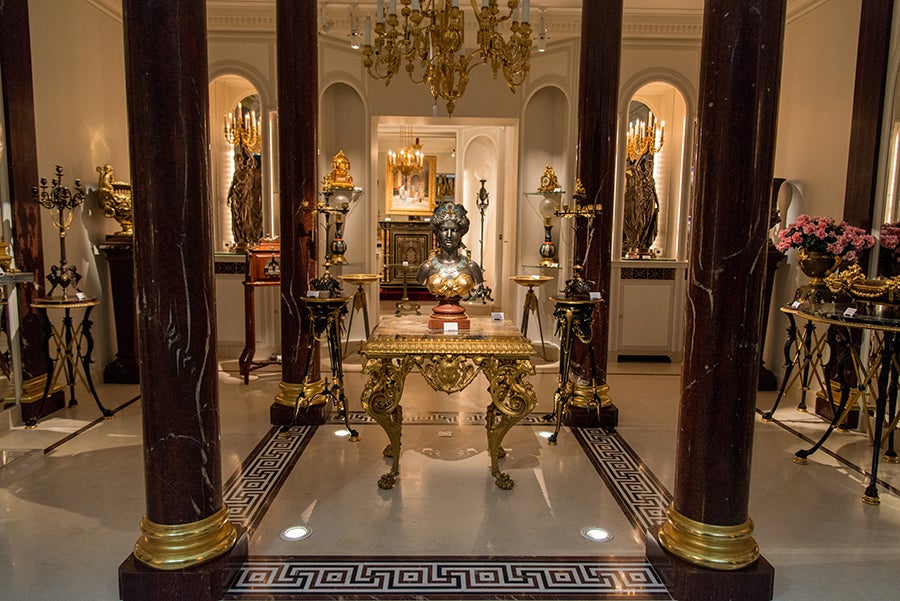
About the Seller
4.9
Vetted Professional Seller
Every seller passes strict standards for authenticity and reliability
Established in 1997
1stDibs seller since 2018
87 sales on 1stDibs
Typical response time: <1 hour
Associations
International Confederation of Art and Antique Dealers' Associations
- ShippingRetrieving quote...Shipping from: PARIS, France
- Return Policy
Authenticity Guarantee
In the unlikely event there’s an issue with an item’s authenticity, contact us within 1 year for a full refund. DetailsMoney-Back Guarantee
If your item is not as described, is damaged in transit, or does not arrive, contact us within 7 days for a full refund. Details24-Hour Cancellation
You have a 24-hour grace period in which to reconsider your purchase, with no questions asked.Vetted Professional Sellers
Our world-class sellers must adhere to strict standards for service and quality, maintaining the integrity of our listings.Price-Match Guarantee
If you find that a seller listed the same item for a lower price elsewhere, we’ll match it.Trusted Global Delivery
Our best-in-class carrier network provides specialized shipping options worldwide, including custom delivery.More From This Seller
View AllJapanese Style Tray Attributed to L.-C. Sevin & F. Barbedienne, France, c. 1860
By Ferdinand Barbedienne, Louis-Constant Sevin
Located in PARIS, FR
Rich landscape in cloisonné enamel on blue and brown background imitating Aventurine stone, attributed to L.C. Sevin and F. Barbedienne. The decor represents a river surrounded by wi...
Category
Antique 1860s French Japonisme Centerpieces
Materials
Enamel, Bronze
Fine Pair of 'Cloisonne' Enamel Dishes Attributed to A. Giroux, France, c. 1880
By Alphonse Giroux et Cie
Located in PARIS, FR
Beautiful pair of polychrome “cloisonné” enamel display dishes attributed to A. Giroux, decorated with birds flying over rushes and flowers on a sky blue background, bordered with a stylized foliate motif frieze. Finely mounted with gilded bronze ornaments such bamboos, masks and scrolls.
Alphonse Giroux and company, famous curiosity and luxury goods shop was situated at No. 7 rue du Coq-Saint-Honoré and in business from the time of the Consulate until the end of the Second Empire. The company was founded by Francois-Simon-Alphonse and continued in 1838 by his two sons, Alphonse-Gustave (1810-1886) and André (1801-1879).
The father became a close associate of the royal family and specialized in the manufacture of refined items for gifts, winning a silver medal at the in 1834. Kings Louis XVIII and then Charles X were both supplied with gifts for “The Children of France” by Giroux. Making progressively small furniture, they were mentionned for the first time in 1837 in the class “cabinet...
Category
Antique 1880s French Decorative Dishes and Vide-Poche
Materials
Enamel, Bronze
$11,477 Sale Price / set
20% Off
Planter and Decorative Dish Attributed to Samson & Cie, France, Circa 1880
By Samson & Cie
Located in PARIS, FR
Important porcelain planter and decorative dish attributed to Samson & Cie.
They are decorated with golden and red friezes of intertwined lotus, fruits and flower cups, fans and two...
Category
Antique 1880s French Planters, Cachepots and Jardinières
Materials
Porcelain
Charming Japanese Style Tray Attributed to l'Escalier de Cristal, France, c.1880
By L'Escalier de Cristal
Located in PARIS, FR
Rare Japanese style diamond-shaped tray attributed to l'Escalier de Cristal, representing lake landscapes in cartouches, and adorned in its center with a lunch scene with a Japanese couple in traditional dress, all highlighted by a gilded decor of flowering branches on a pink porcelain background.
The whole is framed by a gilded openwork bronze mount ending on the sides by two handles.
“L’Escalier de Cristal”, an old and famous Parisian firm, specialized in glass products and ceramics but also suggested furniture and bronze sculptures. It was led from 1885 to 1923 by Emile Pannier’s sons, who gave the name of Pannier Frères to the society, located at the corner of Scribe street and Auber street, next to the new built Paris Opera house. Their Japanese style creations were among many others much appreciated by the critics and the public. They were awarded many medals at various exhibitions, such as the Gold medal at the 1900 Paris Universal Exhibition.
Lots of artists participated in that world success, such as Emile Gallé, who gave to Pannier Frères the exclusive rights of some of his models, or François-Eugène Rousseau, who designed many vases and gave the model of his successful Japanese style dining-set as well. This set was made by the Creil et Montereau Manufacture. In the Japanese style furniture...
Category
Antique 1880s French Japonisme Decorative Dishes and Vide-Poche
Materials
Bronze
Pair of "Clair de lune" Vases attr. to Baccarat & E.Rousseau, France, circa 1880
By Cristalleries De Baccarat
Located in PARIS, FR
Beautiful pair of blue-tinted crystal “rouleau” vases decorated with Japanese-style enameled decoration representing a gilded full moon reflecting a tree with flowering branches, sur...
Category
Antique 1880s French Japonisme Vases
Materials
Crystal, Bronze, Enamel
Pair of Paris Porcelain Vases, France, circa 1880
By Porcelaine de Paris
Located in PARIS, FR
Lovely pair of amphora vases in Paris porcelain, with polychrome rotating decoration of lilacs, roses, clematis, fuchsias and other natural flowers, on a white background. The foot a...
Category
Antique 1870s French Napoleon III Vases
Materials
Porcelain
You May Also Like
Pair of Ancient Japanese Plates, Japan, 19th Century
Located in Roma, IT
Pair of Japan plates is an original decorative porcelain object realized in the 19th century by Japan manufacture.
The smaller tray is decorated with multicolored floral reliefs and decorations and has a polylobed edge.
On the back, it has decorations painted in blue. Provided with metal base.
Dimensions: Height 4 cm, diameter 32 cm.
The larger tray has a polylobed edge and side panel decorations.
At the center floral decorations and on the back blue decorations with birds and flowers.
It is equipped with a metal wall plate holder...
Category
Antique 19th Century Japanese Platters and Serveware
Materials
Porcelain
19th Century Chinese Pair of Porcelain Polychrome Dishes, circa 1850
Located in Royal Tunbridge Wells, Kent
Antique 19th century Chinese pair of porcelain dishes hand painted in black polychrome enamel with traditional scenes, scrolls with emerging d...
Category
Antique 19th Century Chinese Porcelain
Materials
Porcelain
Pair of Japanse Plates
Located in Auribeau sur Siagne, FR
Pair of Japanese porcelain plates. The colors are blue, pink and green. They were made in Japan in the 19th century.
Category
Antique 19th Century Japanese Chinese Export Dinner Plates
Materials
Porcelain
$258 Sale Price / set
20% Off
Quality pair of antique 18th century Chinese plates
Located in Ipswich, GB
Quality pair of 18th Century Chinese plates, having a quality pair of 18th century Chinese plates decorated with flowers in wonderful red, blue, gold and white colours.
D. 1780
Category
Antique Early 18th Century Chinese Ceramics
Materials
Ceramic
Pair of Late 19th Century Chinese Export Famille Verte Platters
Located in Los Angeles, CA
Pair of antique Chinese Export Famille Verte porcelain platters, made in the Late 19th Century. Each of them are decorated with fine hand-painted sea depictions in the center as well...
Category
Antique Late 19th Century Chinese Platters and Serveware
Materials
Porcelain
Pair of Antique English Dishes Handpainted with Chinoiserie Decoration Ca. 1815
Located in Katonah, NY
This pair of pearlware dishes is decorated with a gorgeous chinoiserie pattern.
The pattern depicts a lively garden scene with a pair of songbirds among flowers on a garden terrace.
...
Category
Antique Early 19th Century English Decorative Dishes and Vide-Poche
Materials
Pearlware
More Ways To Browse
Pair Of French Engravings
Hard Paste Porcelain
Green And Pink Porcelain Plates
Antique French Crown
At Meissen
19th Century Theatre
Royal Seal
Antique French Porcelain Dishes
Hard Paste Meissen Porcelain
Germany Porcelain Gold And White
German Gold Mid Century Porcelain
Dragon Silver
English Blue And White Ceramics
Chinese Blue Glass
Hand Painted French Limoges
Sauce Boat
Royal Copenhagen Brown
French Empire Silver
